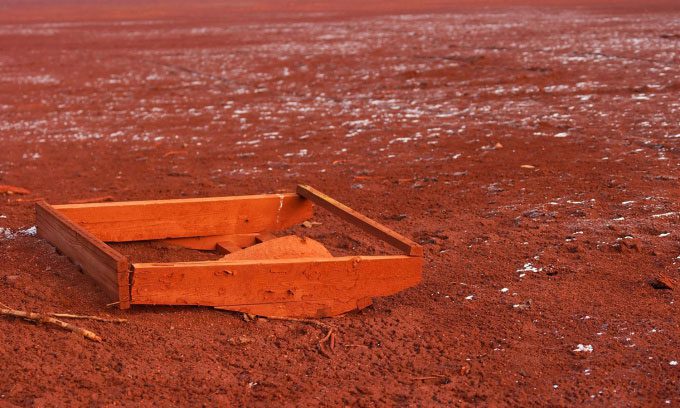A new method developed by a team of German researchers promises to produce high-purity iron from red mud, a waste product of the aluminum industry, in just 10 minutes.
The group of scientists from the Max Planck Institute for Iron Research, a research center focused on iron in Germany, has developed a technique to transform the toxic red mud byproduct from aluminum production into iron, which can then be converted into “green” steel, as reported by New Atlas on February 6. The new research has been published in the journal Nature.

Researchers are working to convert red mud waste from aluminum production into iron. (Photo: Depositphotos).
The aluminum industry generates about 180 million tons of bauxite residue, or red mud, each year. This substance is highly corrosive due to its high alkalinity and rich heavy metal content. In countries such as Australia, China, and Brazil, excess red mud is often disposed of in massive landfills at high treatment costs. The steel industry is also environmentally harmful, contributing 8% of global CO2 emissions. However, the demand for steel and aluminum is expected to increase by up to 60% by 2050.
“Our process can simultaneously address the waste problem in aluminum production and reduce carbon emissions from the steel industry,” said Matic Jovicevic-Klug, the lead author of the new study.
Red mud contains 60% iron oxide. Melting red mud in a plasma electric arc furnace with 10% hydrogen will reduce this material into liquid iron and liquid oxide, allowing for easy extraction of iron. The plasma reduction technique takes about 10 minutes and produces very pure iron, which can be directly processed into steel. The remaining non-corrosive metal oxides solidify upon cooling, allowing them to be transformed into glass-like materials that can be used as fill material in construction.
“If green hydrogen is used to produce iron from the 4 billion tons of red mud generated globally in aluminum production to date, the steel industry could reduce nearly 1.5 billion tons of CO2 emissions,” stated Isnaldi Souza Filho, a member of the research team.
The toxic heavy metals present in red mud are initially “almost neutralized” by the new process. Any remaining heavy metals are tightly bound in metal oxides and cannot be washed away like red mud in landfills.
“After the reduction process, we detected chromium in the iron. Other heavy and precious metals may also have been incorporated into the iron or separated out. We will investigate this in further studies. The precious metals can then be extracted and reused,” Jovicevic-Klug explained. The research team also noted that producing iron from red mud directly using green hydrogen offers significant environmental benefits and economic advantages.


















































